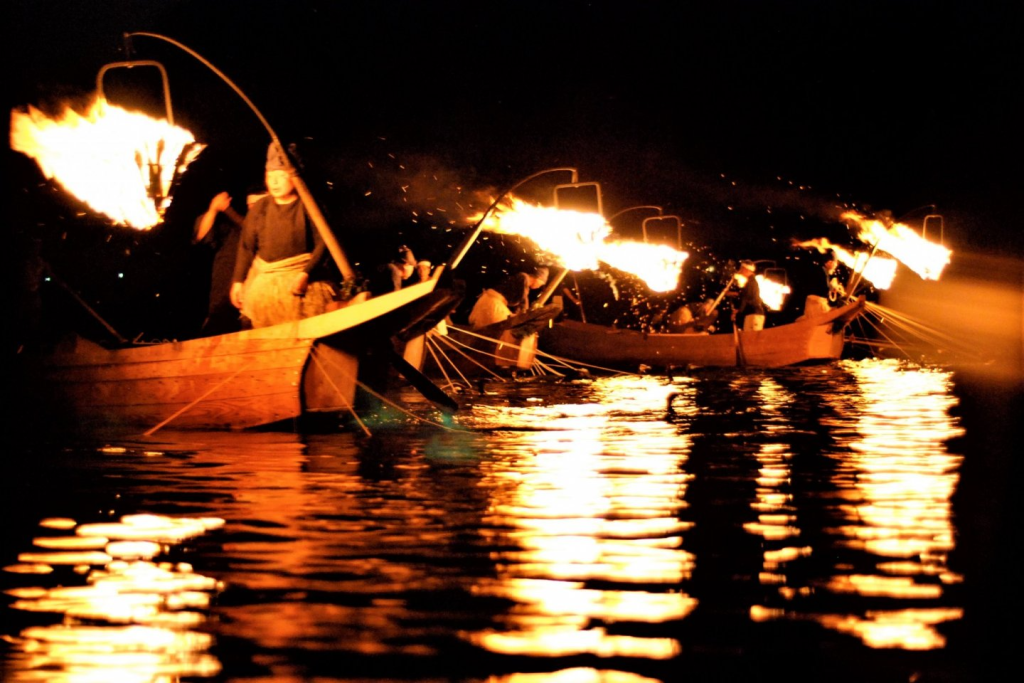
Cormorant fishing is significant enough that the Emperor has been sponsoring Nagara’s captains since 1890 to maintain this practice. The cormorants are also recognized by the royal family and have the title ‘Imperial Fishermen from the Royal Household’. This title is passed down among generations in a specific family.
Cormorant fishing is conducted in 13 locations across Japan, spanning from the islands of Kyushu and Shikoku to the Fuefuki River in Yamanashi Prefecture, situated 100 kilometers from Tokyo. However, it’s only fishermen from the Nagara River with royal patronage. The river is also protected to ensure it is clean and well-maintained.
Three of Nagara River’s fish masters are located in Seki City; however, the other six reside 20km downstream of Gifu City, the prefectural capital city, where most people visit to observe the tradition.
Fishing in Gifu City
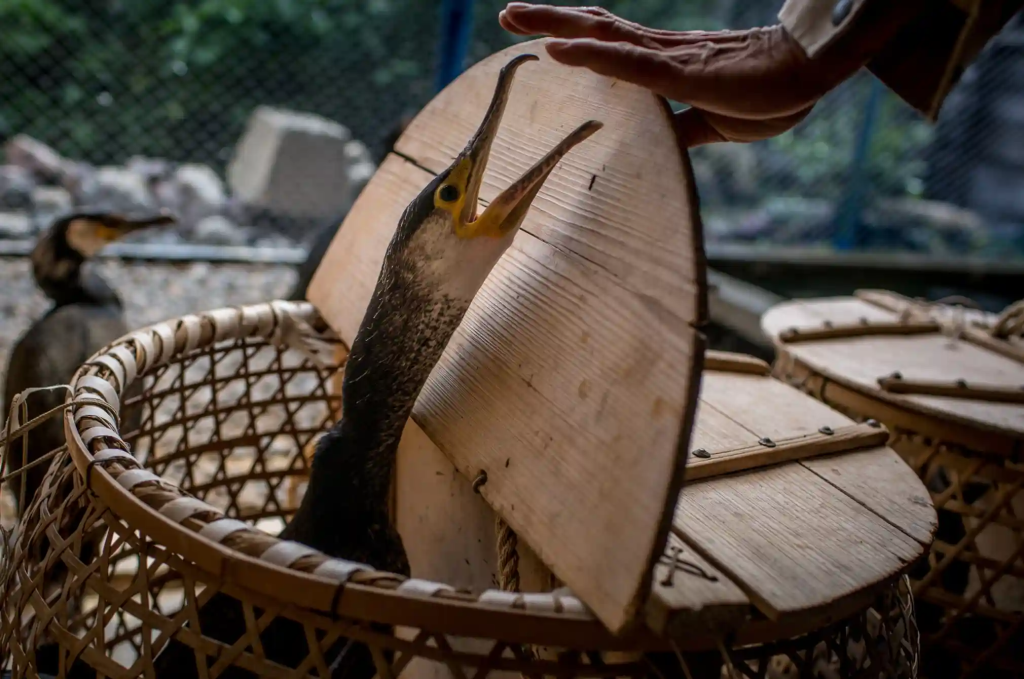
The fishing starts late evening when it gets dark; consequently, each boat is equipped with a small fire of pinewood contained by a basket and suspended from a pole positioned over the vessel’s side. They not only illuminate in the manner but can also draw the fish. The first thing people can see is a flame slowly rising from darkness, followed by a blurry image of the leading boat, with its orange reflections reflected in flickering flashes. As ships move closer, eventually, the fisherman and his assistant (typically his son) and the captain who controls the boat from behind the vessel come into sight.
The fishing master leans across the river, holding the ropes for ten to twelve cormorants in one hand. He uses his second hand to keep his tethers from becoming entangled. The cormorants follow the boat and plunge to search for fish. At times, they emerge with a bulge on their throats, indicating that they’ve succeeded, but sometimes they’re left without a single fish. If they’ve caught fish, they’re returned to the boat, where the captain gets the bird to spit out the fish, and then they get released back to the sea and into the water.
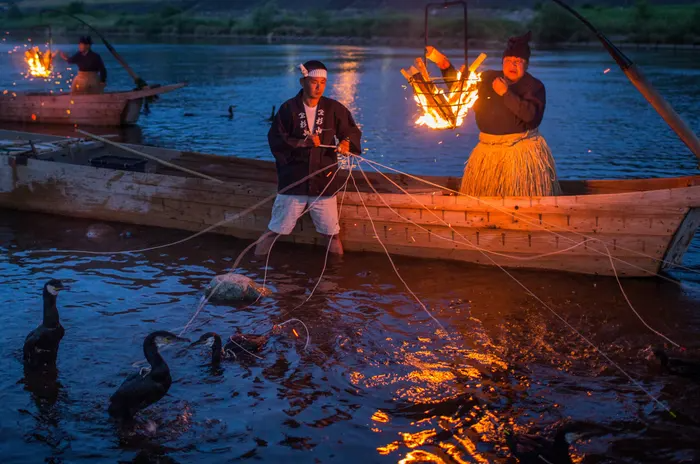
The boats that Gifu’s fishermen use sail the river in succession, one after the next (the fishermen draw a lot each night to decide who gets the chance to sail first). Then, at the night’s close, they all line up to chase any fish in the water’s shallows. Then, you get to witness the fish being caught as the fishermen return. Famous actor Charlie Chaplin was so impressed with cormorant fishing that he visited this area of the Nagara River twice to see it.
Viewing Options
Spectators can choose to take a small cruise boat or watch the spectacle from the promenade that runs along the river. The boats used for spectators take spots along the banks of the river, waiting for fishing boats to sail by. Because the river isn’t too large, and fishing can be done in small stretches, it is possible to have a better view sitting on the banks; however, most prefer to travel on boats.
Fishing is usually conducted at night, about 8:30 pm to 9:30 pm, but the first boats depart around 6:45 pm, so their passengers can take a bite to eat and perhaps take a sip of wine. Several vending boats offer food, drinks, and fireworks that you can start before fishing starts.
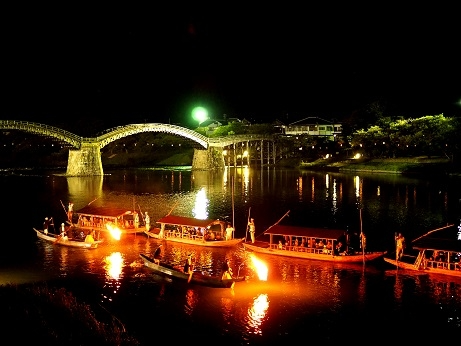
When the guests board the boat, an experienced fisherman demonstrates his skill with the cormorant to the audience. They wear a dark tunic, a hat, and straw skirts, precisely as they’ve done since the beginning of the tradition. For the sake of keeping people engaged until fishing commences, an inflatable boat roams through the river. It is filled with ladies in kimono dresses performing traditional dances. As the night approaches and the fishing begins, three fireworks will be set off.
Fishing Techniques
Cormorants are carried in baskets. However, when they are released, fishermen hold the birds by securing a tether to a rope around their necks. The cord’s purpose is not just to secure the birds and prevent them from taking in bigger fish. The cord is just loose enough that they can swallow smaller ones.
The cormorants have pouches (called “crops’) in the middle of their necks. They use the pouches to store the fish they haven’t fully digested yet. The fishing master brings the giant fish, caught in the pouches, back towards the vessel using their tether. Then, he has to force the fish out with his fingers around the bird’s throat before gently lifting it. It means the fish does not get into the bird’s stomach and remains healthy and safe.
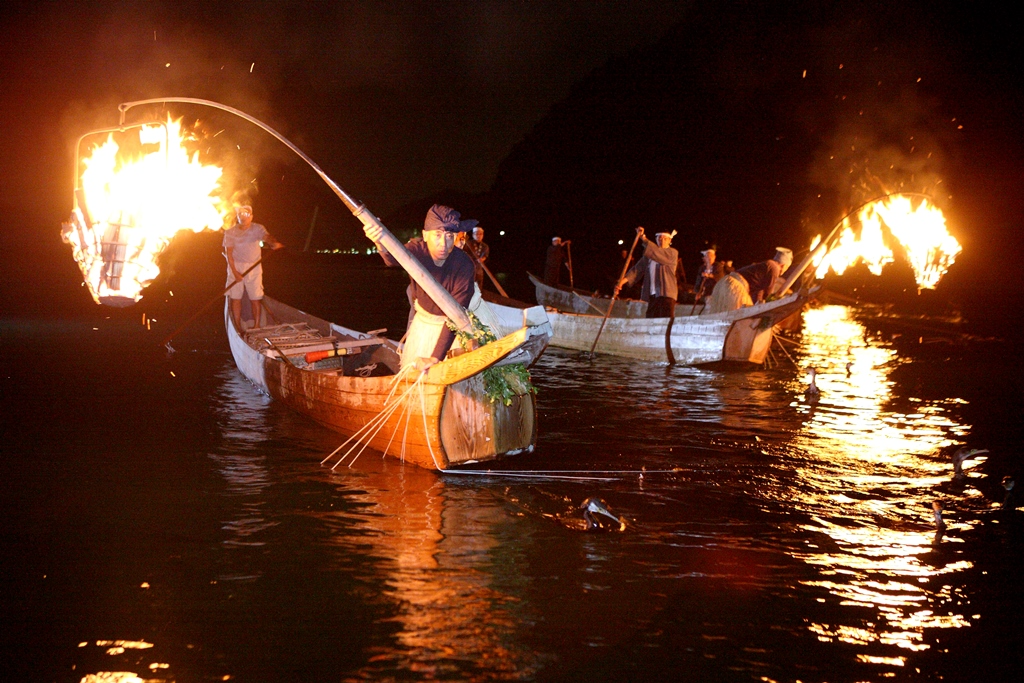
The primary species of concern is ayu because of its sweetish flavor. People believe it has melon and cucumber scents and is considered exquisite food. The birds’ beaks frequently leave marks on the fish, but these marks are seen as indicators of how the fish were caught, a parameter of their quality. The royal household doesn’t seem to mind that the fish has already been inside and out of the fish. The catch at the beginning of every season is delivered directly to the Imperial Palace in Tokyo.
Despite the appearance of the birds receiving a reprimand in this type of fishing (as they are not permitted to consume the entire catch), fishing professionals emphasize a robust relationship with the birds. They keep their birds in aviaries, which are connected to their residences daily, and maintain communication with their cormorants. They also rub their bellies and heads to win their trust and express their love and respect.
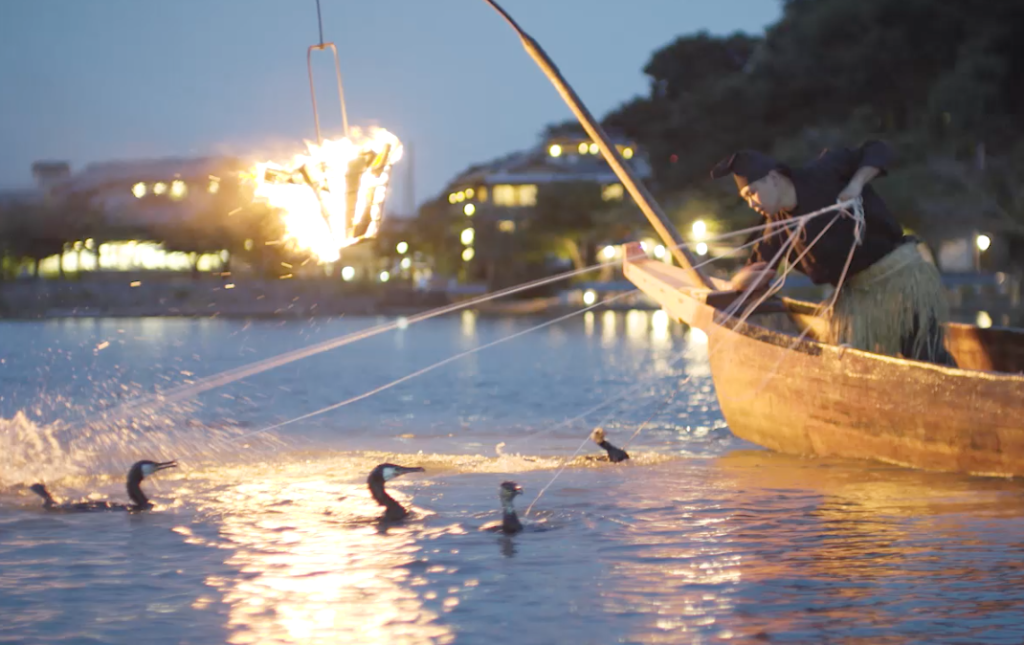
The birds found on Nagara River Nagara River are Japanese cormorants, and their natural habitat is the ocean. They are captured in the wild, and at first, it takes some time to become familiar with the stream of water and also to be able to catch fish. Japanese cormorants usually have a lifespan of 15 to 20 years (the record stands at 26); however, it can take approximately three years of training to master their brains to catch fish. Fishing instructors have shared their admiration for birds’ strength, grace, and stunning cobalt blue eyes and hook-beaks. The cormorant fisherman insists that it is only possible by caring for the birds as part of a family.
Booking and Access
The location of fishing varies from night to night; however, the boats that entertain spectators usually start at the Viewing Boat Office, located on the southern side of the river close to the western end of Nagara Bridge. To reach the location, you must take a bus headed towards Nagara at platform 1 of the bus at Gifu Station or bus platform four at Meitetsu Gifu Station. The buses run every 5-10 minutes and will cost you 200 yen. After 15 minutes of bus ride, you should get off at Nagara-bashi stop. Gifu City is about 30km northwest of Nagoya. It is accessible by train from Nagoya Station via the Tokaido Line in just 26 minutes (for 450 yen). Nagoya Station is on the Tokaido Shinkansen Line that connects Tokyo with Osaka.
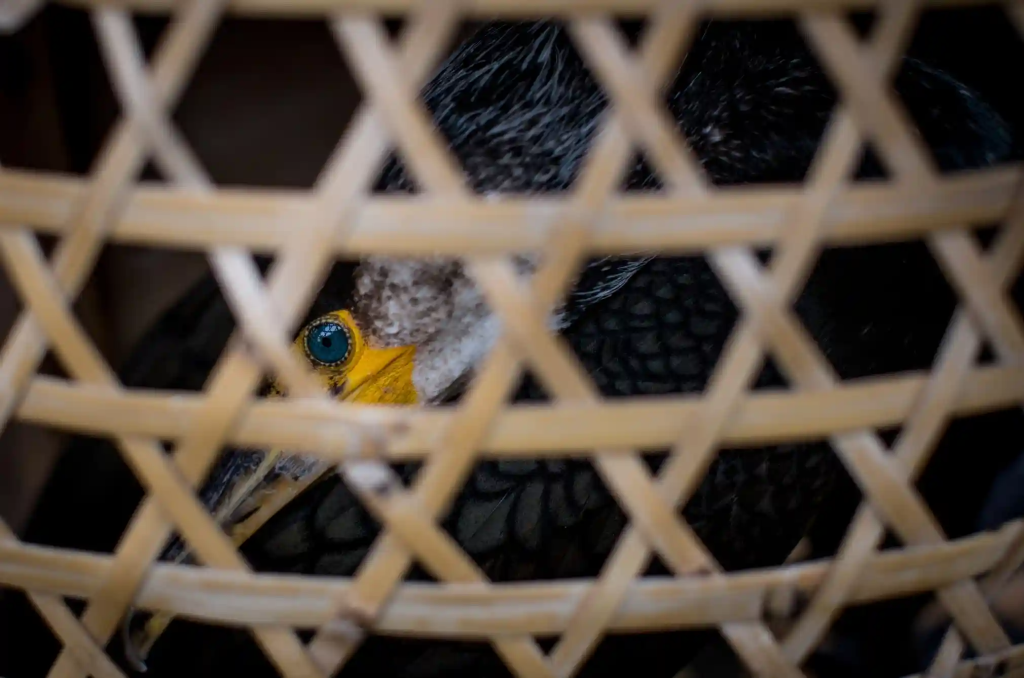
You can reserve a spot aboard a boat for a tour by dialing 058-22-0104 or book your tickets online (and look up the availability) here. Cormorant fishing takes place every day between May 11 through October 15, except when the moon is full. Fishing is cacelled if the river level is excessively high, waters are too murky, or when there is heavy rain. Be sure to call and confirm the fishing is on before going. Take note that cormorant fishing is a tourist attraction so your boat may get a little crowdy. Further details can be found on the official site, which is only available in Japanese.
Gifu’s Fishing Village
On the opposite side of the river, adjacent to the Viewing Boat Office, is the small, secluded row of houses called ‘Ukai No Sato’ (Cormorant Fishing Village). It’s where the fishermen have been living for generations. Since they’re private homes, please do not try entering them; however, you will find cormorant cages, piles of wood stacked in front of the houses, and various other equipment used in the business. If you’re lucky enough, you could encounter some fishermen who often show aspects of their craft.
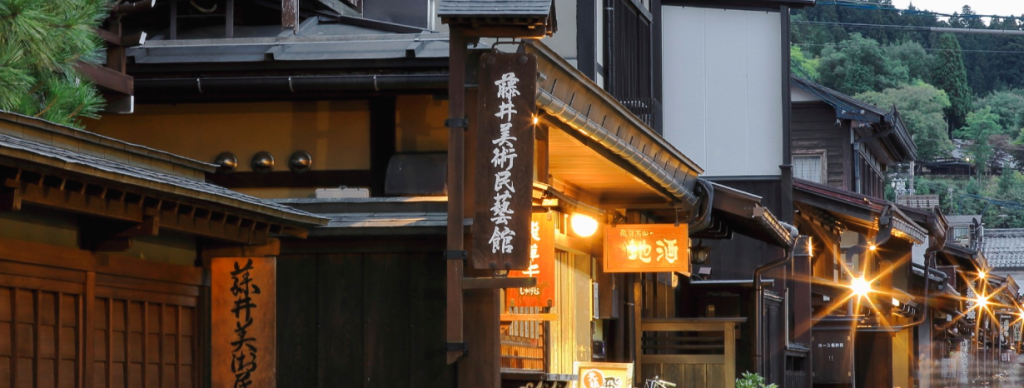
One fisherman has set up a museum where visitors can touch and see his equipment and cormorants up close. You may also taste some of the ayu zosui rice porridge made with portions of the fish taken by cormorants. Admission is free and open from 8 am until 5 pm except the first and fourth Sundays, along with the third and first Mondays each month, and from December 31 until January 4. For more information, visit this site.
Also read about The Evolution of Maid Cafes: From Tradition to Trend in Japan